Sustainable Living with Permaculture Garden
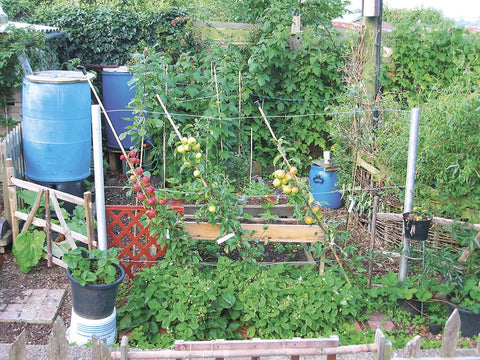
What is Permaculture?
- Permaculture is an innovative framework for creating sustainable ways of living.
- It is a practical method of developing ecologically harmonious, efficient and productive systems that can be used by anyone, anywhere.
By thinking carefully about the way we use our resources – food, energy, shelter and other material and non-material needs – it is possible to get much more out of life by using less. We can be more productive for less effort, reaping benefits for our environment and ourselves, for now and for generations to come.
This is the essence of permaculture – the design of an ecologically sound way of living – in our households, gardens, communities and businesses. It is created by cooperating with nature and caring for the earth and its people.
Permaculture is not exclusive – its principles and practice can be used by anyone, anywhere:
- City flats, yards and window boxes
- Suburban and country houses/garden
- Allotments and smallholdings
- Community spaces
- Farms and estates
- Countryside and conservation areas
- Commercial and industrial premises
- Educational establishments
- Waste ground
Permaculture encourages us to be resourceful and self-reliant. It is not a dogma or a religion but an ecological design system which helps us find solutions to the many problems facing us – both locally and globally.
Writer Emma Chapman defines it as:
“Permaculture, originally ‘Permanent Agriculture’, is often viewed as a set of gardening techniques, but it has in fact developed into a whole design philosophy, and for some people a philosophy for life. Its central theme is the creation of human systems which provide for human needs, but using many natural elements and drawing inspiration from natural ecosystems. Its goals and priorities coincide with what many people see as the core requirements for sustainability.”
Permaculture tackles how to grow food, build houses and create communities, and minimise environmental impact at the same time. Its principles are being constantly developed and refined by people throughout the world in very different climates and cultural circumstances.
Subscribe to Permaculture and become a part of a growing community of like-minded people and a positive key to the change we all wish to see being brought to this planet.
Lead photo: Wade Muggleton’s back garden has been designed using permaculture principles. He collects rainwater, uses vertical space for growing food to get the most out of his garden and incorporates a wide range of plants and varieties.
Part 1 – Ethics
Permaculture is primarily a thinking tool for designing low carbon, highly productive systems but its influence can be very pervasive! What can start as a journey towards living a more ecologically balanced lifestyle can go far deeper, even transforming our worldview and radically altering behaviour. This is the inspirational nature of permaculture, it is a means of connecting each of us more deeply to nature’s patterns and wisdom and of practically applying that understanding in our daily lives.
The discipline of permaculture design is based on observing what makes natural systems endure; establishing simple yet effective principles, and using them to mirror nature in whatever we choose to design. This can be gardens, farms, buildings, woodlands, communities, businesses, even towns and cities. Permaculture is essentially about creating beneficial relationships between individual elements and making sure energy is captured in, rather than lost from, a system. Its application is only as limited as our imaginations.
Permaculture is not just a green way of living or a guiding system of ethics, it is a way of designing using nature’s principles as a model; ‘bending’ them as much as possible to create fertile, self-reliant, productive landscapes and communities. This is what defines permaculture and it is uniquely effective and powerful. Where permaculture stands out from the crowd as a design system is in its capacity to integrate the intellect with ethics. It can teach us to ‘think’ with the heart and respond with the head. By combining pragmatism with philosophy, we can create a greater synthesis.
The three ethics are: Earth Care, People Care and Fair Shares. They are not exclusive to permaculture and were derived from the commonalities of many worldviews and beliefs. They are therefore shared by many throughout the world. What permaculture does is it makes them explicit within a design process; removing them from the realms of philosophy and practically rooting them in everybody’s lives. This transforms thinking into doing. It is their combined presence within a design that has a radical capacity for ecological and social transformation.
Earth care
Imagine the originators of permaculture, Bill Mollison and David Holmgren, in the 1970s, seeing the devastating effects of a temperate European agriculture on the fragile soils of an ancient Antipodean landscape. Like the dust bowls of Oklahoma in the 1930s, an alien agriculture has the capacity to turn a delicately balanced ecology into desert. Their initial response was to design a permanent agriculture with tree crops and other perennials inhabiting all the niches, from the canopy to the ground cover and below. The soil is left untilled to establish its own robust micro-ecology. Key to this is that the land must be biodiverse and stable for future generations.
This ethic of Earth Care was the basis of permaculture design, but it was bound to grow and pervade all aspects of permaculture… How can we have an organic agriculture or horticulture and manage our landscapes to sustain themselves over generations on one hand, then consume goods from industries managed in ecologically damaging ways on the other? It’s pointless designing an organic garden and then buying a gas guzzling car or building a house from concrete and steel, when we can use local materials with less embodied energy.
The original vision of care for all living and non living things has grown to embrace a deep and comprehensive understanding of Earth Care that involves many decisions; from the clothes we wear and the goods we buy to the materials we use for DIY projects. Though we can’t all build our own house or grow all our own food, we can make choices about what and how we consume and conserve. Key to this is the understanding that up to one third of our ecological footprint is taken up by the food we buy, so even growing a small amount in a city allotment or container garden can make a difference. Permaculture is all about making a difference.
People care
Fundamental to permaculture is the concept of Permanent Culture. How can we develop a permaculture if our people are expendable, uncared for, excluded? People Care asks that our basic needs for food, shelter, education, employment and healthy social relationships are met. Genuine People Care cannot be exclusive in a tribal sense; there can be no elites here: no plutocracies or oligarchies, all members of the community must be taken into account. It is a global ethic of Fairtrade and intelligent support amongst all people, both at home and abroad.
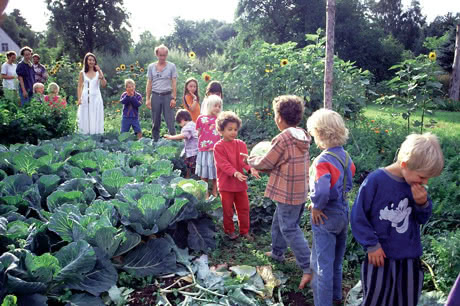
At the core of People Care is an understanding of the power of community. If we can change our lives as individuals and make incremental differences: think what we can do as a community! The permaculture designers who helped initiate Cuba’s post oil urban agriculture are a good example. They mobilised a whole country to become self-reliant. Ecovillages and cohousing communities who can significantly reduce their ecological footprint by sharing resources are other good examples.
In smaller ways; in our cities, towns and villages, we can all benefit from deepening community links. I may not have all the skills to grow all my food or eco-renovate my house, for example, but by developing good networks I can expand my capacity to live more sustainably and become more self-reliant. This is a decentralised, democratic vision of social transformation where grassroots initiatives like the Transition Towns movement can begin to plan for a low carbon ‘energy descent’ on a community level. There is no time to wait for central government to act, or eventually to react.
Fair shares / Future care
The last ethic synthesises the first two. It acknowledges that we only have one earth and we have to share it with all living things and future generations. There is no point in designing a sustainable family unit, community, or nation whilst others languish without clean water, clean air, food, shelter, meaningful employment, and social contact. Since the industrialised North uses the resources of at least three earths, and much of the global South languishes in poverty, Fair Shares is an acknowledgement of this terrible imbalance and a call to limit consumption (especially of natural resources) in the North.
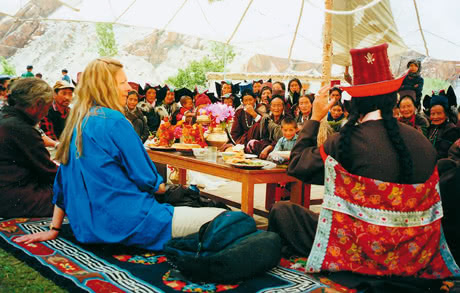
Permaculture fundamentally rejects the industrial growth model of the global North at the core of its ethics, and aspires to design fairer, more equitable systems that take into account the limits of the planet’s resources and the needs of all living beings. Whilst these permaculture ethics are more like moral values or codes of behaviour, they are not enough on their own.
We need the principles of permaculture to provide a set of universally applicable guidelines that can be used in designing sustainable systems. Otherwise, permaculture becomes merely a lifestyle choice within an existing unsustainable system. These principles can be inherent in any perma-culture design, in any climate, and on any scale. They have been derived from the thoughtful observation of nature, and from earlier work by ecologists, landscape designers and environmental science…
Part 2 – Principles
The 12 permaculture design principles are thinking tools, that when used together, allow us to creatively re-design our environment and our behaviour in a world of less energy and resources. These principles are seen as universal, although the methods used to express them will vary greatly according to the place and situation. They can be applied to our personal, economic, social and political reorganisation and the ethical foundation of permaculture guides the use of these design tools, ensuring that they are used in appropriate ways.
Each principle can be thought of as a door that opens into a whole system of thinking, providing a different perspective that can be understood at varying levels of depth and application. David Holmgren, the co-originator of permaculture, redefined permaculture principles in his seminal book, Permaculture: Principles and Pathways Beyond Sustainability. When I started giving talks about permaculture to all sorts of different audiences, I decided to write my own explanations and apply the principle not only to designing gardens and farms but to business, society and culture. Every principle comes with David’s ‘proverb’ and is followed by my explanation.
1. Observe and interact
“Beauty is in the eye of the beholder.”
For me this element of stillness and observation forms the key of permaculture design. In a world of instant makeovers, of ‘fast’ everything, having the capacity to observe the seasons, watch the changing microclimates on a patch of land, understand how the patterns of wind, weather and slope affect the frost pockets and plant growth, is an opportunity to begin to learn the deeper aspects of Earth Care. It also makes us more capable of making wise decisions about how we design or eco-renovate our houses and plan our gardens and farms.
2. Catch and store energy
“Make hay while the sun shines.”
Intimately connected to observation is the art of capturing energy in a design, so that we minimise the need to seek resources from the outside. In a garden this is about avoiding planting tender seedlings in frost pockets in spring or maximising solar gain by siting a greenhouse/conservatory on the south side of a building so that we can both extend the season and heat a house with passive solar gain. We are attempting to capture water, sunlight, heat, soil, biomass and fertility whenever we can in order to become more self-resilient.
3. Obtain a yield
“You can’t work on an empty stomach.”
4. Apply self-regulation and accept feedback
“The sins of the fathers are visited on the children of the seventh generation.”
When we burn fossil fuels we release CO2 into the atmosphere, trapping heat and increasing temperatures. This causes ice to melt which leads to loss of reflective surfaces, leading to more absorption of sunlight and even higher temperatures. We must accept responsibility for our actions.
5. Use and value renewable resources and services
“Let nature take its course.”
Whenever possible, permaculture seeks to use resources that can be renewed. This naturally applies to energy but also to ecological building, coppicing, soil conservation, and the planting of perennial food crops, as well as annuals with seed saving. The dangers of relying on non-renewables, technological fixes and speculative money are becoming ever more evident.
6. Produce no waste
“Waste not, want not. A stitch in time saves nine.”
In the UK, we throw away the equivalent of 24 bags of sugar per household per week: 14.1 kg. That’s 29 million tonnes (55% of that is household) per year. I have a favourite saying that the landfill of today will be the ‘mine’ of tomorrow. At PM we have no waste collection and our business is designed on permaculture principles. We reuse first and recycle all possible materials: paper, cardboard, textiles, glass and compost all organic materials, from kitchen waste to shredded paper. The subsequent compost feeds the edible container garden outside our office and provides a medium for growing plants for other projects at the Sustainability Centre.
7. Design from patterns to details
“Can’t see the wood for the trees.”
When Tim Harland and I designed our house and garden, we read up on permaculture design, forest gardening, renewable energy, eco-architecture and eco-renovation as much as we could. We spent a year observing the land before we started planting and planned how best to make our house a happy, energy efficient place to live in. We observed the seasons, the climatic variations, the weather, the soil patterns, slope and our own human activities on the site as a family.
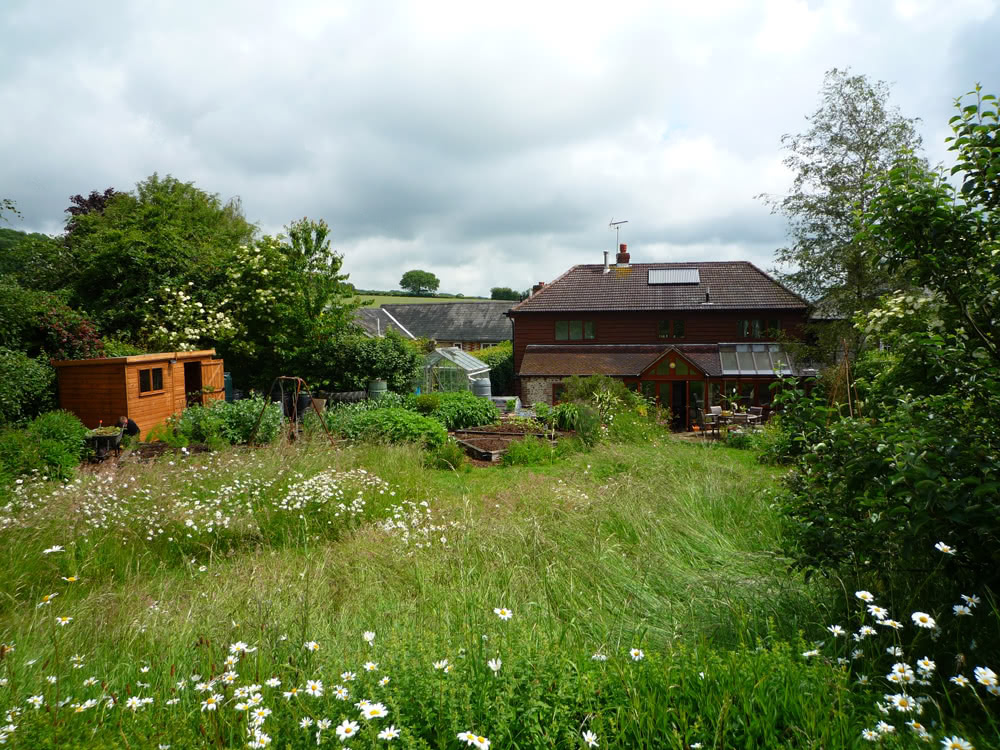
We also considered the ‘edge’ between house and garden and how we might make this both aesthetic and productive in terms of food crops and energy harvesting. In other words, we started off looking at the bigger picture, the pattern of what sustainable living might be, with examples from other places, and then we refined our exploration into the detail appropriate for our particular site. We didn’t make a ‘shopping list’ of individual items or projects and try to mesh them together in a hotchpotch of what might be regarded as ‘green’.
8. Integrate rather than segragate
“Many hands make light work.”
We have a cultural tendency to separate veggie gardens from flower gardens and use hard edges to design our spaces. Companion gardeners will know however that the more integrated the orchard is with the wildflower meadow, or the vegetables are with flowers frequented by beneficial insects, the less pests will prevail. The same is true for people. Cultural diversity yields a robust and fertile culture, whereas a rigid monoculture of politics and religion can bring sterility, even social and political repression.
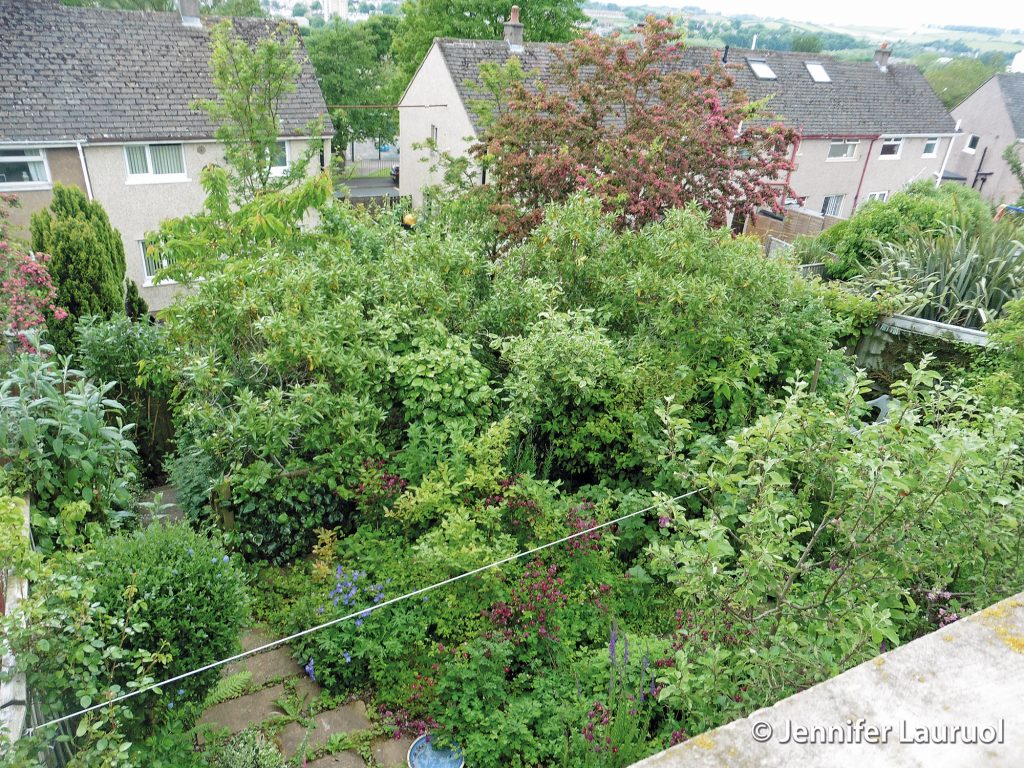
Jennifer Lauruol’s back garden in Lancaster is on a steep slopes and required creative thinking when designing the space.
Her garden is a densely packed food growing area at the top and a paradise for wildlife below.
9. Use small and slow solutions
“The bigger they are, the harder they fall.”
Our society currently depends on vast inputs of fossil fuels, whilst our biosphere is over-loaded by their outputs. The more accessible and fixable our technology and chains of supply are, the more robust the system. This principle speaks of hand tools, of appropriate technology that can easily be fixed, and of relocalisation.
Currently we have a three day ‘just in time’ supply chain of supermarkets. If the fuel supply is interrupted, the super-market shelves will empty at an alarming rate. Better to build resilience into our systems by relocalising our essential needs as much as possible and having technological alternatives that we can fix.
10. Use and value diversity
“Don’t put all your eggs in one basket.”
Biodiversity creates healthy ecosystems. Diversity in terms of crops, energy sources, and employment, make for greater sustainability. Valuing diversity amongst people makes for a more peaceful, equitable society. Conflict and wars are the biggest slayers of sustainable development.
11. Use edges and value the marginal
“Don’t think you are on the right track just because it is a well-beaten path.”
Examples of ‘edge’ in nature are: where canopy meets clearing in the woodland, inviting in air and sunshine and a profusion of flowers; where sea and river meet land in the fertile interface of estuaries, full of invertebrates, fish and bird life; where the banks of streams meet the water’s edge and fertility is built with deposited mud and sand in flood time, giving life to a riot of plant life; where plains and water meet, flooding and capturing alluvial soils…
Edge in nature is all about increasing diversity by the increase of inter-relationship between the elements: earth, air, fire (sun), and water. This phenomenon increases the opportunity for life in all of its marvellous fertility of forms. In human society, edge is where we have cultural diversity. It is the place where free thinkers and so-called ‘alternative’ people thrive. where new ideas are allowed to develop and ageless wisdom is given its rightful respect. Edge is suppressed in non-democratic states and countries that demand theological allegiance to one religion.
12. Creatively use and respond to change
“Vision is not seeing things as they are but as they will be.”
In nature, there is a process of succession. Bare soil is colonised by weeds that are in turn superseded by brambles. Then pioneers follow; like silver birch, alder and gorse which stabilise the soil. The latter two even fix nitrogen to create an environment that can host slow growing temperate climate species like oak, beech and yew. But nature is dynamic and succession can be interrupted by brow-sing animals, storms that fell trees and create clearings or a changing climate that is less hospitable for certain climax giants like oak and beech.
The challenge of a permaculture designer is to understand how all these factors interact with each other in a landscape or on a part-icular plot of land, and design accordingly. It is no good restoring coppice without fencing out deer, or planting trees if they will shade out the solar panel in a decades’ time. Equally well, we need to appreciate how climate change will affect our agriculture, with higher summer temperatures, greater volumes of rain in winter and springtime, and more violent storms with higher wind speeds. Hotter summers may allow more vineyards on the gentle southern slopes of the chalk downland. They may also make English oaks less viable in the south. What then do we plant and how do we design in resilience to our settlements?
One example is to plant more shelterbelts for farmland as well as housing estates and forgo building on floodplains. The principle is deeper than this, however. It invites us to imagine a future world, a world without cheap oil, and a world that necessarily radically reduces its carbon load in the atmosphere. By doing this, we take the first steps towards creating it. We stand on the bedrock of permaculture ethics Earth Care, People Care and Fair Shares, and are empowered by a set of principles that can inform our planning and actions. Human beings can either be the destroyers or the self-elected stewards of our planet. We have the capacity to put our ethics into action, literally to ‘walk our talk’.
With permaculture design, we create the potential for a powerful beneficial relationship with the Earth. We can become stewards for our world whilst still maintaining an openness and humility to accept nature as perhaps our most powerful and wisest of teachers. What a culture we could build if these two perspectives were the bedrock of our civilisation! I believe that as we awaken as human beings and our awareness grows, we turn away from designing our own private Eden and engage more fully with the rest of humanity and the biosphere. We cannot build ecological arks on a failing planet. We are part of an inter-dependent ecological system. There can be no ‘them’ and ‘us’ in ecology. Permaculture is about low carbon, eco-friendly, even abundant living. It is also an ethically based design system for people who want to not only transform their lives and the lives of the people around them, but also to play their part in bringing an ecologically balanced, equitable and kinder world into existence. That is our challenge.
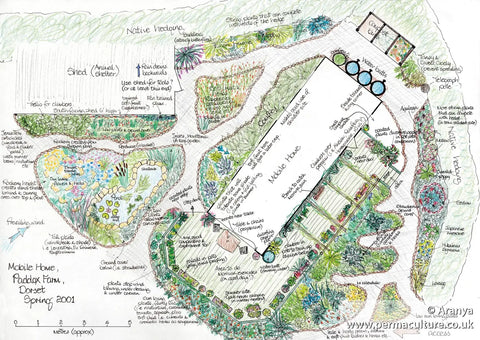
Design is the conscious assembly of concepts, materials, techniques and strategies for a particular purpose. Yet seeing all the exciting possibilities that permaculture offers us, it’s easy to forget this and just end up throwing together a collection of ‘green’ technologies and techniques, only to be disappointed by the result. There’s now no shortage of these ‘green options’ for us to choose from and we’ve been given the impression that as long as we behave in certain ways and buy the right products, we’re doing the best we can.
But permaculture and design is about more than just choosing the right things, it’s also about how we connect them together. Nature abounds with examples of beneficial relationships, showing us the value of this strategy for long-term sustainability. So as permaculture designers, our role is to place components in the best places relative to each other, to create self-sustaining systems that also meet our needs. However, such relationships are often site-related, so we need to be able to consciously design; to become a ‘permaculture chef’, rather than simply learning to follow a recipe. While perfecting this can be a lifelong journey, it’s also not so hard to learn the basics.
While it’s easy to worry these days about our impact on the environment, it’s perfectly natural for us to be shaping it to meet our needs, every species that lives here does just that. The important question that Biomimicry advocate Janine Benyus asks us is whether our choices are well-adapted ones. Permaculture gives us the tools to create systems that support not just ourselves, but future generations too and Life as a whole.
In Permaculture: A Designer’s Manual, Bill Mollison suggests:
- That the systems we construct should last as long as possible, and take least maintenance.
- These systems, fuelled by the sun, should produce not only for their own needs, but the needs of the people creating or controlling them. Thus, they are sustainable, as they sustain both themselves and those who construct them.
- We can use energy to construct these systems, providing that in their lifetime, they store or conserve more energy than we use to construct them or to maintain them.
These design considerations provide us with clear criteria for how any permaculture design should perform. If we can design systems within these guidelines that meet our human needs, and at the same time support the ecosystem as a whole, then we will be well on our way to a sustainable human society.
We should invest most time and energy in the establishment of a good design, so inputs decrease as time goes on. Conversely, yields may start off small but then increase steadily. At a certain point, the total energy yielded from the site exceeds the total amount invested and the system goes ‘into profit’. One more thing worth remembering is that biologically we’re simply an ecosystem living within a larger ecosystem. And that whatever we do has consequences.
Ethics, principles and directives
Permaculture advises us that when we design to meet our needs, we should do so in a way that supports the ecosystem as a whole. The permaculture ethics, often abbreviated to Earth Care, People Care, Fair Shares, are our primary guidance in this process. Any ideas that don’t fit with these ethics just aren’t permaculture.
Bill Mollison and David Holmgren also provided us with a set of principles and directives, which have since been adapted and added to by others. The principles of ecology guide us in applying successful natural patterns to design gardens and farms. However, we can be even more creative and apply many of these same principles to people-based designs too. There are also principles that address how we think, helping us to see the gifts in every situation.
You’ll find many more and different versions of these principles on your travels. It’s not so much a matter of which ones are ‘right’, but rather which of them you find useful in your life.
Design frameworks
Permaculture has borrowed many useful thinking tools from different places, including several design frameworks from other disciplines. One commonly used is SADI, which comes from Landscape Architecture; the letters standing for Survey, Analysis, Design, Implementation. The value of a framework is that it can guide us through the process of design, reducing the chance that we might overlook something. While each of these stages can be quite detailed in themselves, for us the main things to remember are:
Survey ~ of both the needs of the client(s) and the landscape that will be meeting those needs. This might well include some mapping. The more focus given to this observation stage, the better a design is likely to be. Bill Mollison suggests observing a system for at least one whole cycle, which for a land-based design is a whole year. This shouldn’t prevent us from making changes though, just don’t, as Bill would say, do anything you might find difficult to reverse.
Analysis ~ this is the stage where we take all the information we have gathered and use the ethics, principles and appropriate design tools and methods to help us decide the best elements to choose and how best to connect them together into resilient low input, high output systems.
Design (or as I prefer to call this part Decisions, as the whole process is about design) ~ this is where we commit to our ideas, producing maps and lists that communicate our ideas to our client(s). While attractive maps are helpful at this stage, including your reasons for decisions can help illuminate the design process and increase the likelihood of the clients understanding the bigger picture of how it is intended to function. A design proposal should also include suggested implementation and maintenance plans.
Implement ~ at some point we have to take our ideas and put them into practice. However much time we take to deliberate, we’ll still be surprised by some things that don’t work as planned; so we shouldn’t be afraid to take action. Only by implementing a design do we learn how well it performs in the real world. Mistakes are great opportunities to learn, but good attention to the survey and analysis stages should limit them to smallish ones.
Maintain / Monitor ~ this wasn’t included in the original acronym, but maybe Landscape Architects just implement and walk away. Without knowing how to care for the system (and particularly unfamiliar technologies like composting toilets), it can fail to perform as intended and perhaps be abandoned as ineffective.
Design tools and methods
Throughout the design process we can make use of many different thinking tools and methods. These can for instance help us to make client interviews fully inclusive, especially when working with larger groups or community designs. They can help us with our decision making processes to ensure we create effective designs and also help us to produce a realistic implementation plan.
Permaculture is neither a specific recipe, nor an end point. Rather it is an ongoing process of harmonious adaptation to nature’s changing conditions. The design process is a gift to us all that can help us to find and stay on our desired path.





Leave a comment